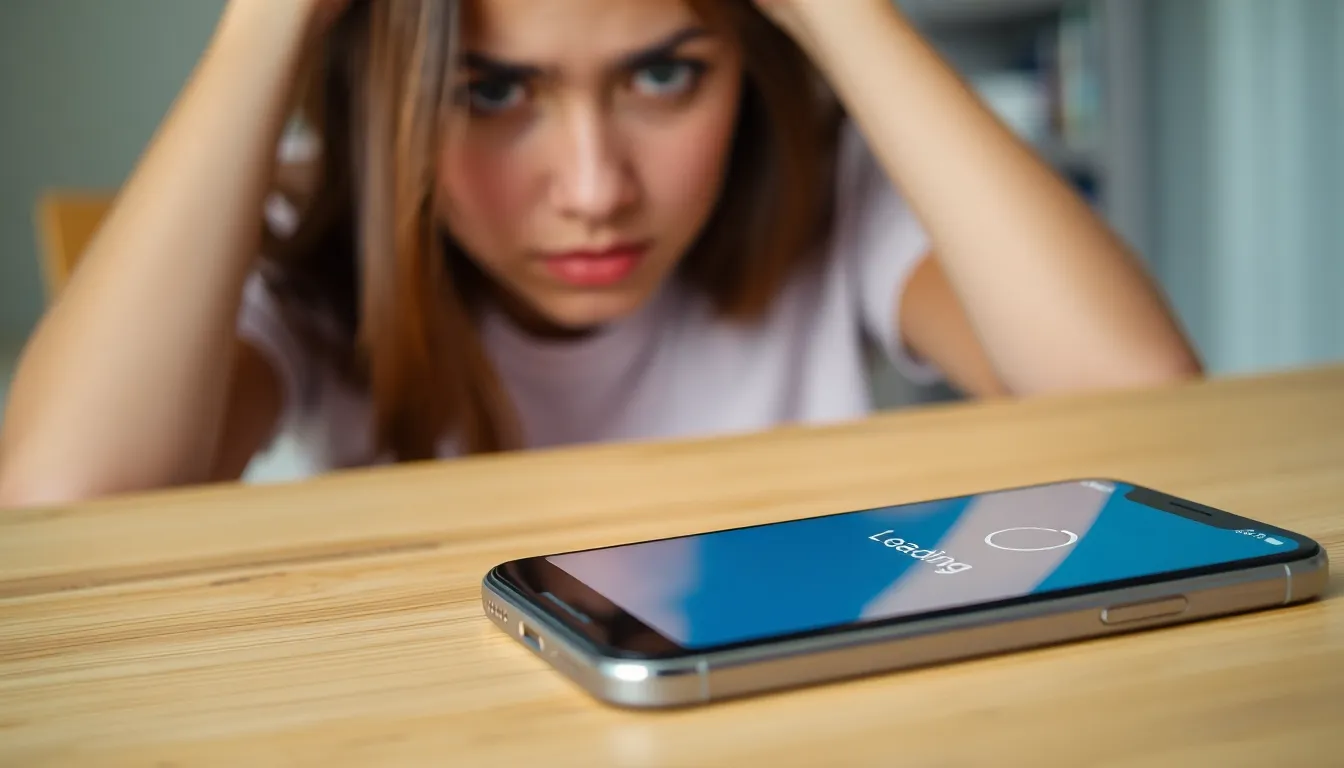Imagine this: you’re in the middle of a heated text battle or about to capture the perfect selfie, and your iPhone decides it’s auditioning for a role in a horror movie by turning itself on and off like a possessed ghost. Frustrating, right? You’re not alone. Many users face this quirky dilemma, and it can feel like your phone’s playing a game of hide and seek with its battery life.
But fear not! Instead of tossing your device out the window in exasperation, there are practical steps to troubleshoot this maddening issue. From software glitches to hardware hiccups, understanding the reasons behind this behavior can save your sanity—and your phone. Let’s dive into the solutions that’ll help you regain control and keep your iPhone running smoothly.
Table of Contents
ToggleCommon Causes of iPhone Restarting
Understanding the causes behind an iPhone unexpectedly turning on and off is crucial for effective troubleshooting. The issues often fall into two categories: software problems and hardware problems.
Software Issues
Software glitches often lead to unexpected restarts. Outdated operating systems can create conflicts that cause instability. App compatibility also plays a significant role; certain apps may not work seamlessly with the current iOS version. Corrupt data can accumulate in the system, resulting in erratic behavior. Resetting settings or updating the software may resolve these issues quickly.
Hardware Problems
Defective batteries frequently contribute to an iPhone restarting unexpectedly. Aging batteries lose their ability to hold a charge, causing the device to shut down unexpectedly. Physical damage can also impact internal components. Loose connections within the device may disrupt normal operation. In some cases, a damaged charging port can prevent the iPhone from receiving power effectively. Identifying these hardware-related problems is essential for a comprehensive fix.
Troubleshooting Steps

When an iPhone keeps turning on and off, users can take several troubleshooting approaches to restore functionality. These steps provide quick resolutions and can often address common issues.
Force Restart Your iPhone
Starting with a force restart can resolve various glitches. To perform this, quickly press and release the Volume Up button, then quickly press and release the Volume Down button. Finally, press and hold the Side button until the Apple logo appears. This method is effective for refreshing system memory and terminating any unresponsive apps that may cause restarts.
Update Your iOS
Keeping the iOS version current plays a crucial role in optimizing performance. Go to Settings, select General, then tap Software Update to check for available updates. Install any updates if prompted; these updates often include bug fixes that can directly address stability issues. Ensuring the device operates on the latest software version enhances compatibility with apps and system features.
Check for App Conflicts
Identifying and resolving app conflicts can help stabilize the device as well. Review the most recent apps installed or updated before the problem began. Uninstall any suspicious apps or those associated with frequent crashes. Additionally, users can check the App Store for updates to ensure all apps are running the latest versions. These steps help minimize the chances of app-related interruptions.
Advanced Solutions
Consider advanced solutions when basic troubleshooting doesn’t resolve the issue of an iPhone repeatedly turning on and off. These methods can help restore device stability.
Factory Reset Your iPhone
A factory reset can restore the device to its original settings, effectively erasing all data and potential software glitches. Before proceeding, back up important information to avoid data loss. Access the reset option through the Settings menu, then navigate to General and select Transfer or Reset iPhone. This method often resolves deeper software issues that a simple reset cannot fix. Users must remain aware, however, that this action clears all personal data, requiring the reinstallation of apps and settings afterward.
Visit an Authorized Service Center
For those experiencing persistent issues, visiting an authorized service center is a recommended option. Technicians at these centers possess the expertise to diagnose hardware problems that might cause an iPhone to malfunction. Issues like damaged batteries or faulty charging components often require professional attention. Customers can also confirm the validity of repairs to ensure quality and warranty coverage. Taking this step can provide reassurance and restore proper functionality more effectively than user-initiated repairs.
Preventive Measures
Maintaining the functionality of an iPhone involves several key steps to prevent unexpected shutdowns.
Regular Software Updates
Keeping the iPhone’s software up to date enhances performance and stability. New updates often contain important bug fixes that address known issues. Users can check for updates by navigating to Settings, selecting General, and tapping Software Update. By regularly installing these updates, he or she strengthens the device against glitches that could lead to unexpected restarts. Users should also enable automatic updates to simplify the process, ensuring they’re always running the latest version.
Avoid Unofficial Accessories
Using unofficial accessories poses a risk to the iPhone’s integrity. Many third-party chargers and cables lack proper safety measures and can cause hardware damage, potentially leading to power issues. It’s advisable to use only Apple-approved accessories to ensure compatibility and safety. These certified products are designed to meet specific standards that protect the device from malfunctions. Choosing official accessories helps maintain optimal performance and reduces the chance of unexpected shutdowns.
Facing an iPhone that keeps turning on and off can be frustrating. However, understanding the potential causes and implementing the right troubleshooting steps can make a significant difference. By addressing software glitches and hardware issues, users can often restore their device’s functionality.
Regular maintenance is key to preventing these problems. Keeping the iOS updated and using only Apple-approved accessories can enhance performance and reduce the risk of unexpected shutdowns. For those who still experience issues after following the suggested steps, seeking professional help from an authorized service center is a wise choice. Taking these proactive measures ensures a smoother iPhone experience and helps users stay connected without interruptions.




